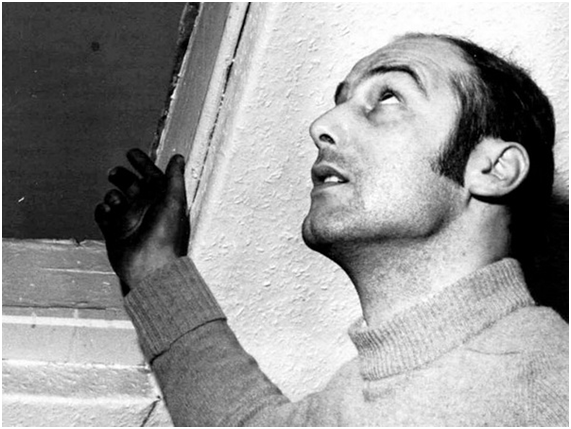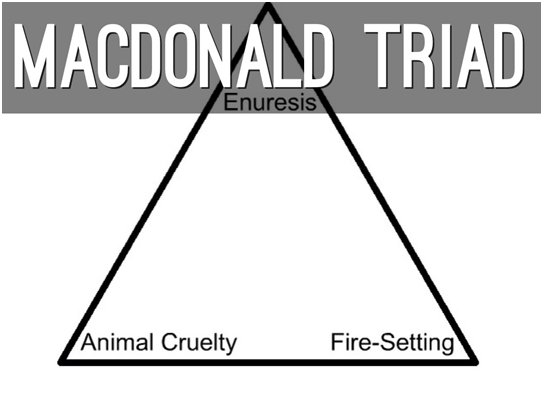
When a serial killer is arrested it is not uncommon to hear from family, friends and neighbours that “he seemed like a good person”. Many serial killers blend in perfectly with society, hiding behaviors that might betray them: John Wayne Gacy, for example, was an active member of his community and dressed as a clown for children’s parties; Ted Bundy was an extremely charming and kind man and none of his victims ever suspected he might be a serial killer; or Dannis Rader, the BTK killer, was a family man and a respected member of his parish.
So, is it possible to recognize a serial killer?
Over the years, traits and characteristics common to most serial killers have been identified. These traits could help us to identify subjects at risk. Let’s see them together.
1) ABUSE DURING CHILDHOOD

Childhood is a very important moment in an person’s life. It is during childhood that we learn how to behave, looking at the adults around us and depending on the environment in which we live.
It is therefore not surprising that many serial killers have had a difficult childhood, full of both physical and psychological abuse. If a child is repeatedly beaten, diminished and neglected, there is a high probability that he will develop antisocial behavior, personality disorders and commit crimes in adulthood.
This doesn’t mean that all people abused during childhood are criminals, but a high percentage of serial killers said they had a difficult childhood.
A study completed in 2005 by Mitchell and Aamodt of Radford University (Virginia, USA) looked at 50 serial killers. The two professors studied the subjects’ past, based on sound evidence and not only on their stories, finding that the percentage of abuse suffered during childhood was higher in the sample examined than in the rest of the population. In particular:
- 36% were physically abused
- 26% were sexually abused
- 50% were psychologically abused
- 18% were abandoned
- 2% did not report any kind of abuse
While for the rest of the population the percentages were:
- 6% were subject to physical abuse
- 4% were subject to sexual abuse
- 2% were subject to psychological abuse
- 18% were abandoned
- 70% did not report any kind of abuse
It should be noted, however, that the normal population may have lied about the abuses received, not wanting to reveal them, while serial killers may, in general, emphasize such abuses to justify their actions.
However, the link between difficult childhood and violent behaviour in adulthood is often present.
2) CONTROL MANIACS AND MANIPULATORS

Most serial killers like to have control over everything. This is one of the reasons why they are not afraid of the authorities and behave boldly even after arrest. Often they don’t reveal important parts of their story, for example where a body is hidden, to have the situation in their power and to attract attention.
Many serial killers, then, live a double life. It’s well known that Ted Bundy, for example, was a volunteer at a suicide hotline, but he’s not the only one. Many serial killers have a real double life. In addition to being cold-blooded killers, they participate in charity events or help their own parish.
Dr. Deborah Schurman-Kauflin, in her 2005 book “Vulture: Profiling Sadistic Serial Killers“, asks death row criminals why there is this duality and everyone has given the same answer: they decide when to be good and when to be bad.
They also think they can use these activities on their behalf if they are discovered. People will find it hard to believe that those who help the poor are ruthless serial killers.
These two aspects denote their absolute need to have power and manipulate those around them, perhaps to compensate for the fact that they never had power during their childhood.
3) SELFISH AND BRAVE

Selfish serial killers often brag about their murders. They can brag to their accomplices, to the police, to the press or simply to themselves.
Fortunately, this trait often leads to their arrest, as in the case of the serial killer Trevor Hardy, the Beast of Manchester. The man bragged to his brother about killing a young girl and it was precisely this urging need to brag that led to his arrest.
Some serial killers even go so far as to exaggerate the number of their victims to receive more attention.
4) CHARMING

In order to manipulate the people around him and, therefore, to have power, the serial killer must be able to earn their trust. It is therefore not uncommon for a serial killer to be a charming and charismatic person.
Ted Bundy is, again, a good example. He confessed to killing 30 girls, but his victims are thought to be many more. He was able to get close to them and gain their trust thanks to his well-kept appearance and his charismatic charm. Sometimes he wore a fake cast, pretending to need help.
5) HEAD INJURIES
A connection between head trauma and subsequent development of violent behaviour has been identified.
There are many known cases in which a person’s personality has changed significantly after a head injury, resulting from physical abuse or simple accidents.
After the trauma the victims become more aggressive and impulsive, leading to violent behaviour. Some examples are Nannie Doss, Raymond Martinez Fernandez and Gianfranco Stevanin.
This change in behaviour is usually due to damage to the frontal lobe, hypothalamus and limbic system.
6) THE MACDONALD TRIAD

The Macdonald triad is a series of three characteristics that are said to be common and recurrent in the childhood of a serial killer. The hypothesis of these characteristics in relation to serial crimes in adulthood was formulated by psychiatrist J.M. Macdonald in his 1963 study. Subsequently this hypothesis was endorsed by FBI psychiatrists and agents John E. Douglas and Robert K. Ressler.
The features are:
- Pyromania: or the mania of setting fires only for the sake of doing so and destroying objects.
- Nocturnal Enuresis: that is bed wetting beyond the age considered normal for this behavior.
- Zoosadism: cruelty to animals. Killing and torturing animals, rather than spiders and insects, that are larger and often pet animals such as dogs and cats.
According to Macdonald, subjects with a combination of two or more of these traits are likely to become serial killers.
However, this theory is losing credit and it is thought rather that these traits result from abuse during childhood and that it is these who can develop criminal behavior in adulthood.
And you, do you think you know someone who presents these traits?















